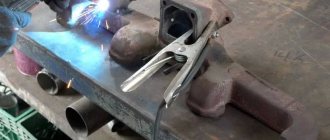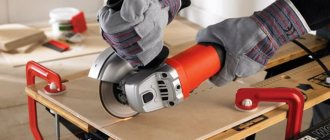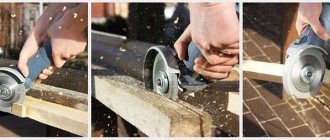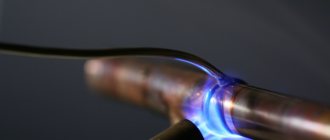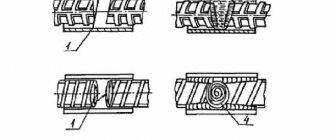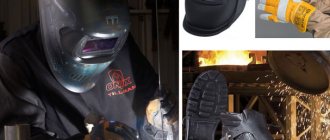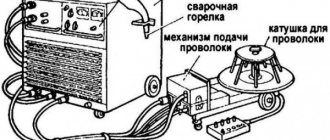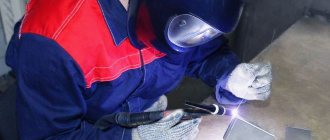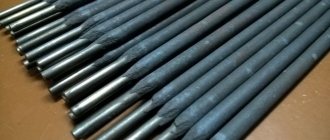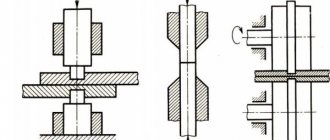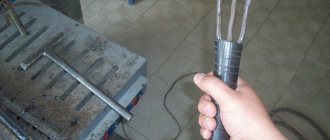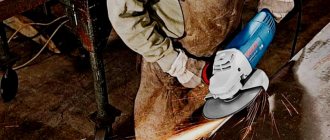Cars often use practical light-alloy aluminum wheels, giving the car a stylish look. They are used for a long time, withstand heavy loads on road irregularities, but sometimes get damaged when they fall into holes and potholes at high speeds. Repairs are expensive, take a lot of time, and have their own nuances and features. The best way is to weld the discs with argon. It restores damaged areas and gives products a second life. The seam is strong and reliable.
Welding a car rim.
What damage can be removed by welding?
A forged disc is highly fragile, while a cast disc bends easily.
As a result of getting into unpleasant situations on the roads, the following may appear on the metal:
- rim curvature;
- faults;
- deep nicks and scratches;
- cracks;
- absence of individual fragments;
- chips.
Weld.
All faults, except hub cracks, can be repaired.
Examples of argon welding:
As many of us know, Russian roads, not the best in the world, sometimes even present us with such surprises as a disc splitting into two parts.
Parts of the disk are partially tacked using argon welding.
The seam is welded both from the outside and from the inside. In case of geometry violation, the disk is installed on a straightening machine, where the disk geometry is leveled using a hydraulic press.
We tint the weld seam with spray paint. The ideal option is to completely repaint the disc with powder paint.
Argon welding of a cracked spoke of a cast wheel.
The importance of proper welding
You can trust an experienced specialist to eliminate defects on disks. When there is a high demand for repairs, workers without experience offer their services. As a result, the rotating disk experiences considerable loads and often crumbles when it falls into a hole. This can lead to troubles: bruises, injuries, wrecked cars and deaths.
Argon welding of cast wheels is a matter that requires:
- great attention from the master;
- equipment serviceability;
- proper preparation of damaged material;
- carrying out final work.
Disc welding process.
It is necessary to look for specialists with experience to carry out repair work, for example an RLD group. Simply placing a suture over a crack is unacceptable. Mastery can only be achieved through practice, performing argon welding of chips on parts made of aluminum and titanium.
The worker’s qualifications eliminate wheel imbalance, prevent wheel runout and protect the car from undesirable consequences.
Where to weld alloy wheels in Zhulebino
- Our tire service is located in the Zhulebino districts and also serves the Kotelniki, Lyubertsy, Vykhino, Kosino, Nekrasovka districts. We provide various tire fitting and argon wheel welding services. Our specialists perform the following work on repairing disks using argon welding:
- Repairing cracks.
- Connection of individual parts of the disk.
- Surfacing of missing disk elements.
- Disc alignment.
A special feature of wheel restoration using argon welding is the possibility of using a material whose composition will exactly match the composition of the product (this can be found out by looking at the wheel markings).
Preparatory work
To brew a disc, you need to properly prepare it:
- remove paint;
- cut chips;
- at the ends of the cracks, drill holes with a diameter of 2 mm to relieve the stress of the alloy;
- remove the oxide film with an abrasive material until the joint shines;
- degrease all edges;
- to select a patch, select a rim from the same metal composition;
- Treat broken areas with a grinder.
We recommend reading Features and technology of argon welding
Cleanup site.
An illiterate selection of material for a patch will lead to a large consumption of electrodes and will not give a positive effect. The paint must be removed along the working area 1 cm from the welding site to get rid of chemical fumes.
It is better to do this using a grinder with a 1 mm thick disc. Prepared parts are welded much better.
Preparatory procedures
To obtain a high-quality and reliable connection, the surfaces to be welded should initially be prepared. This process includes:
- cutting chips and cracks;
- drilling the ends of cracks to relieve excess metal stress;
- cleaning the welded surfaces from the oxide film;
- degreasing of welded edges.
If the disk repair involves welding on the missing element, care should be taken to select a patch made of metal with a similar composition as the disk itself (only homogeneous compositions need to be welded).
Welding methods for alloy wheels
The choice of methods depends on the equipment available in the workshop. Repair involves surfacing a defective metal rod under the protection of an argon bath. The seam does not oxidize and is dense. If you have an inverter device, argon arc welding is used to eliminate breakdowns of the cast disk. The choice of electrode is based on the refractory tungsten version and the corresponding additive.
At service stations, semi-automatic operation with a uniform mechanical supply of melting material is often used. After the main process is completed and the disk has cooled, it must be checked for symmetry. Defects include any deviations in balancing.
Welding patches begins with cleaning the area and tacking the material on both sides. After this, the seams are finally formed. Cracks are sealed from the inside until a molten mass appears on the outside. The last stage of work is removing excess metal and grinding.
Welding from the inside.
Repairs using argon are carried out at high currents, reaching 120-140 A. The resulting seam can withstand heavy loads.
Welding under gas protection has the following advantages:
- Connects active and non-ferrous metals.
- Provides a reliable connection that is integral with the part and does not stand out after processing.
- Does not require the use of fluxes.
- Metal oxidation does not occur in the working area.
- Discs do not deform when heated.
- Relatively high processing speed is maintained.
- No sparks appear during operation.
The strength of the seam depends on the choice of consumables and tools.
Welding technology
Repairing cast wheels by argon welding requires a preliminary determination of the chemical composition of the base material, since the metal patches must match it for good weldability and have approximately the same characteristics. It is possible to join only homogeneous metals.
Depending on the degree of damage, the appropriate power is set on the equipment. If the metal thickness is less than three millimeters, then preliminary cutting of the edges is not required. Welding of cast disks should be carried out at increased speed, which will minimize the thermal effect on the metal being processed. For better arc ignition, the electrodes should be preheated.
Maintaining the arc length in the range of 1-1.5 millimeters will contribute to the destruction of the oxide film on the surface, which is necessary to obtain a high-quality weld. To avoid damaging the shielding gas cloud, the welder must guide the electrode smoothly, avoiding oscillatory movements. Uniform supply of filler material will be ensured when using semi-automatic equipment.
To free metal from dirt, mechanical methods will be required, and from fats, oils, and paint - chemical methods. When metal patches are used to remove defects, they must first be tacked to ensure fixation, after which you can begin to weld the seams. To weld aluminum disks, reverse polarity is used.
If sections of significant thickness are to be welded, the welding site must be preheated to avoid the appearance of cracks in the metal. A torch or cutter is used for this.
Repairing disks using the welding method should begin by setting the current to 150 Amperes. It is recommended to carry out welding in two passes, first welding the root of the seam, and then filling the joint. You can also use a torch to go over the underside of the seam to even it out.
If it is necessary to surfacing the missing part, then a small current is set, about 120-140 Amperes. The extension should be carried out in several layers, removing the excess by grinding after welding. If a crack is welded, then it is necessary to ensure that the weld metal covers the sides with a margin. If, after cleaning the seam, there are unfused areas, you should go over the seam again and then clean it.
Argon should be supplied to the work area a few seconds before welding begins. For an arc to occur, the torch must be located close to the surface of the disk. It is not recommended to feed filler wire too quickly to avoid causing excessive spatter. The wire should be placed slightly in front of the burner. The arc should be as short as possible. The optimal distance between the surface of the disk and the end of the electrode is one and a half millimeters.
The weld crater is welded without interrupting the arc, by gradually reducing the voltage. The supply of argon is stopped only a few seconds after the completion of welding of the disk. In addition to repairing these car parts, motorcycle rims can be welded in the same way.
Selecting electrodes and additives
Welding of discs made of low-melting materials is carried out using currents of reverse polarity. Metal rods of different compositions are used as a consumable electrode.
We recommend reading: How to cook cast iron in an argon environment
| Rod brand | Application |
| 1070 and 1100 | Amts, AD1 |
| 1450 with titanium | For aluminum alloys in the food and aircraft industries |
| 4043 | Welding of silicon compounds (internal combustion engine blocks and other structures) |
| 4047 with silicon | Reduces deformation and increases metal fluidity |
| 5087 with zinc | Reduces the likelihood of cracks |
| 5183 | Works with Al-Mg and Al-Mn materials in the food and shipbuilding fields |
| 5356 | AMg3 – AMg6 |
| 5554 | For welding chemical containers and rims |
| 5556 | Connects Al-Mg T-pieces |
| 5754 | The weld on Al-Mg materials exhibits high corrosion resistance |
The ground cable is connected to the disk, the positive potential is connected to the electrode.
Electrodes.
For a strong weld, it is important to choose the right filler wire. It comes with the addition of silicon, zinc or titanium. Therefore, it is necessary to study the disk passport indicating the composition, depending on which the additive is selected. If silicon predominates in the disk material, as evidenced by a burst product, wire is needed with the addition of this element. Bends are a sign of a high magnesium content; the additive is selected with Mn.
Features of working with aluminum and titanium
Welding using inert gas is performed to connect parts made of titanium and aluminum alloys.
The following methods are used for this:
- manual with tungsten rod;
- automatic with consumable electrode and argon protection.
Wheels in workshops are most often repaired using manual welding. The current on the inverter is set within 120-140 A, argon is supplied 15-20 seconds before the start of the work process. The burner is brought to a distance of 1.5-2 mm to the part and held in this position. The seam is reliable and durable. When working with filler material, sudden hand movements should not be allowed.
Treated weld area.
Welding has positive qualities:
- does not form an oxide film at the junction;
- You can fasten parts made of thin material.
We recommend reading: How to cook brass in an argon environment
The greater the damage, the more powerful the inverter must be.
Features of the welding process
Welding using the protective environment of inert argon can be carried out using melting and non-melting electrodes. Their diameter is selected depending on the characteristics of the parts being connected. Depending on the composition of the metal of the disk being welded, the type of filler wire is selected. There are three methods of argon-arc welding:
- manual using a non-consumable tungsten electrode;
- automatic using argon and consumable electrodes;
- automatic using argon and non-consumable electrodes;
To repair wheel rims in auto repair shops, manual welding using a non-consumable electrode is mainly used.
Description and order of repair work
Repairs are carried out in the following order:
- the tire is removed from the wheel and the disc is inspected for cracks and chips;
- the coating is cleaned of dirt, dust and traces of oil;
- cracks are cut with a grinder and degreased;
- argon arc welding with filler wire is performed;
- the cooled seam is subjected to mechanical processing.
A forged or cast wheel rim is boiled in an argon atmosphere. Without it, the joint becomes fragile and quickly bursts. The patches are tacked on both sides, then the seams are formed. After the electric arc dies out, the gas supply is turned off after 10-15 seconds. During this time, the seam has time to set. The filler material is selected depending on the thickness of the metal being joined: the wire should be slightly smaller in diameter. The Down Slope function is enabled on the inverter. It helps the arc fade out smoothly.
If surfacing is carried out in large volumes, it is better to use the pulse mode. The build-up is done gradually. It is recommended to start welding from the inside, then from the outside with a 4043 additive containing magnesium or silicon. Excess metal is removed during processing, which involves cleaning edges and planes from sagging. Noticed deficiencies must be corrected immediately.
Types of damage
Cast wheels bend more easily, while forged ones are more fragile. Dynamic overloads have a destructive effect on metal. On the rim appear:
- curvature;
- deep axial faults;
- cracks in the hub area (they cannot be repaired);
- chips.
Crack on a cast wheel
It is important to ensure the integrity of the car wheels, maintaining the circumference, so that the wheel does not become eight - the load on the rim will increase. Repairs begin with editing. When mechanically repairing a rim, structural defects of varying depths and types often appear on the metal. Cracks and chips are eliminated by surfacing with preliminary cutting.
Recommendations from the experts
Novice welders may benefit from advice from experienced colleagues.
The number of layers of metal applied depends on the depth of the chips. The seam is made up to 3 cm long. The cracks are melted from the inside, then from the outside. The welding site is preheated to 250-300°C. You can check the temperature with laundry soap: a brown mark indicates that it has reached 250°, black – 300.
It is better to make the cuts with a cutter, which will prevent any remaining chips from getting into the seam. You should learn from simple details, gradually moving on to more complex work. Up to 5% carbon dioxide can be added to argon. When replacing a chipped piece, a disk made of the same material as the one being repaired is used as a donor. The resulting seam can be processed on a lathe. It allows the operation to be carried out with micron precision.
Work order
After preparing the surface and gaining at least some experience, you can begin repairing the discs. The operating procedure is as follows:
- Warm up the welding area with a torch . In this case, you need to ensure that the metal does not overheat.
- Apply the electrode to the seam after a certain color appears (it depends on the material of the product). If you follow all the rules, the metal from the electrode will melt quickly and fill the seams.
- When welding a disc chip, it doesn’t hurt to grab it around the edges. This will secure the position of the patch. After this, you can weld the elements along their entire length.
- the seam should be visible on both sides. Liquid hot metal must fill the space completely and enter the metal structural lattice of the disk.
If the disk is thick, welding is carried out in several stages on both sides. The seams are overlapped. This type of welding is much more reliable. After the disc has completely cooled, it should be sanded and prepared for painting. A grinder with grinding and sharpening attachments will help you with this. After complete surface treatment, the cast restored disc is ready for further use.
